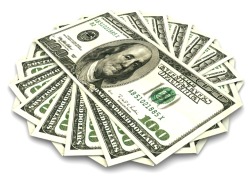
Despite improving labour conditions the negative outlook for the greenback remains unchanged owing to the Fed’s acceptance of inflation in order to stimulate growth and employment.
The long-term outlook for the USD remains bleak, says a recent currency market report released by UBS Financial Services.
“In our view, the dollar has many structural problems and will likely weaken in the long term,” said authors of the report Thomas Flury and Katherine Klingensmith, both strategists at UBS.
“The Federal Reserve continues to actively loosen monetary policy; it appears that the Fed at this point will conclude its quantitative easing program and maintain the balance sheet at a stable size until further notice.”
However, the report said that as soon as the Fed readies itself for eventual monetary tightening – long before it eventually hikes interest rates, not expected until the second quarter of 2012 – the dollar will rally.
U.S. economic data has improved in many sectors, but the rating agency Standard & Poor’s move to a negative outlook for U.S. Treasury securities was a stark reminder of the fiscal challenges faced by the world’s largest economy.
Although these challenges are faced by many advanced economies, the U.S. has been particularly slow to formulate strategies for improving the debt dynamic, it said.
The outlook for the Euro too remains negative as the report warns investors can be easily caught wrong-footed if they develop too much enthusiasm for the Euro.
“This past week’s sell-off in euros came also on the back of resurgent concerns about the Greek debt situation. We expect that Greece will need some additional aid or a more lenient debt package, and that reopening this discussion will likely again cause concern about a Greek default and potential contagion to other European peripheral countries.”
The authors of the report recommend hedging euro exposure in the near term, or at a least waiting for better entry levels for long positions.
Stronger currencies like the loonie and the Australian dollar are exposed to profit taking over the next month. The two currencies remain in the core of long-term recommendation for the U.S. dollar alternative. The strategists, however, warn against longer-term investment as both currencies have reached very expensive levels and will therefore struggle to appreciate further.
The report promotes currencies such as the Australian and Canadian dollars, Swiss franc and select Scandinavian currencies as an alternative for investors seeking to unwind their U.S. dollar and Euro holdings.